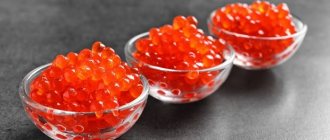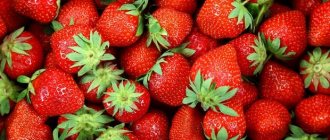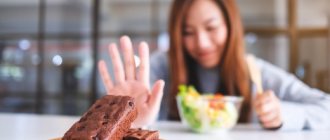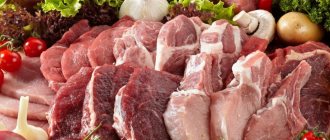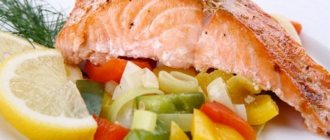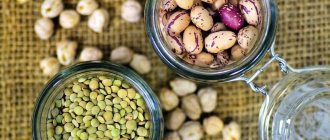For a diet aimed at helping a person lose weight, it is important to select products that are not only low in calories, but also as healthy as possible. With a modest energy value, they should ideally have a whole storehouse of microelements and vitamins to make the menu complete and nutritious. A real godsend for the diet is trout. Despite the fact that the calorie content of any type of trout will please even the most picky people, the amount of useful elements in it is amazing. If you cook this fish without adding a large amount of fat and spices, it will be difficult to find a more dietary dish with low calorie content. And the range of recipes from this universal product includes not only hot dishes, but also salads.
You could write a whole treatise on the benefits of eating trout, but here is just one fact that will convince many. This river or sea fish is very capricious, and it can only survive in clean waters. In turbid water with elevated temperatures, trout quickly die. Therefore, the consumer can be calm about the quality of the meat of this fish. Although you still cannot do without precautions, and the choice of trout also needs to be approached with the utmost seriousness.
Characteristics and types of trout fish
The total number of subspecies of this fish that exists now is approximately 20. And they, in turn, are already included in 3 genera of the salmon family.
They all have characteristic features that make them similar to each other:
- The body is elongated, slightly flattened on the sides;
- Small scales;
- The average length of one fish is from 40 to 50 cm;
- There are dark spots on the back and sides;
- The color of the meat can be white, pink or even red. This will depend on how oxygen rich the water is and what kind of nutrition was received.
More often on store shelves you can see trout with red meat, because it is grown artificially. This is affected by both excess feed and lack of oxygen.
Fish is supplied to Russia mainly from Karelia or Lake Issyk-Kul. Very often, it is first bred in the sea, and only then moved to a body of water adapted for this purpose.
There are three major genera:
- Atlantic salmon;
- Pacific salmon;
- Loaches.
Most often you can find Rainbow trout in stores; it belongs to the Pacific species. You can find both freshwater fish and those that live in the sea. They are usually fatter because they live in colder water temperatures.
What does caloric content depend on?
The energy value is determined by the variety of varieties and processing methods. The calorie content in its raw form with a low fat content is 88 kcal based on 100 g of product. The nutritional value of fatty varieties reaches 231 kcal/100 g.
The calorie content of boiled trout is about 107 kcal/100 g. The number of calories in baked fish is approximately 184 kcal/100 g, since during cooking the liquid contained in the trout meat evaporates and the dry mass of the dish increases.
The energy value of salted and dried fish ranges from 185 kcal/100 g to 250 kcal/100 g, depending on the amount of vegetable oil added.
The calorie content in salmon caviar is 245 kcal per 100 grams of product taken.
What are the beneficial properties of trout meat?
Eating trout every day is quite an expensive pleasure. Its high cost is due to the complexity of growing and catching fish. However, its meat is so tasty and healthy that it is absolutely impossible to refuse fish.
Moreover, it has a number of properties that have a positive effect on the body:
- The brain begins to work better;
- Immunity increases, the body's resistance to various diseases improves;
- Hormonal levels stabilize;
- It can also prevent cancer;
- The vessels become more elastic, which means there is no risk of blockage;
- Cholesterol levels become lower;
- Blood pressure is normalized;
- Toxins and waste are removed from the body;
- An excellent source of fluoride, bones, teeth, and nails become stronger;
- Reduces the risk of stroke or heart attack;
- Mood improves, a person is less susceptible to depression and irritation;
- The functioning of the gastrointestinal tract is improved.
If the fish is not subject to heat treatment, for example, salted with a small amount of salt, then it will retain more beneficial properties. Only this type of fish retains fluid in the body, so waste and toxins will not be eliminated.
BJU indicators in trout
Energy value per 100 grams:
- proteins 17.5 g;
- fats 2 g;
- carbohydrates 0 g;
- water 30 g.
Be sure to read: Blue whiting fish: benefits and harm to the body, calorie content when fried and boiled, how to eat when losing weight
Trout, like all fish, does not contain carbohydrates, and water makes up 70% of its mass.
Contraindications for eating trout
The only contraindication is individual intolerance, which is extremely rare. If you cook it correctly and do not pass it on, then the food will only bring benefits.
If there is no intolerance, but a reaction to the product appears, this may indicate the presence of the following factors:
- During cultivation, antibiotics were used, as a result of which the meat changes its color, it becomes more red;
- The fish did not undergo high-quality processing; parasite larvae could remain.
Fish contains retinol, a natural antioxidant and fat-soluble vitamin. In large quantities it can cause the following negative effects:
- Nausea, which may lead to vomiting;
- The organs of the gastrointestinal tract begin to function poorly;
- Activity decreases;
- The liver is not working well.
Composition and calorie content of the product
Red fish has high nutritional value due to its chemical composition, rich in vitamins and other useful elements.
It contains a complex of valuable substances:
- Omega-3;
- calcium;
- aliphatic amino acids;
- zinc;
- phosphorus;
- potassium;
- iodine;
- vitamin A;
- vitamin D;
- B vitamins;
- tocopherol;
- niacin;
- cholesterol;
- iron;
- sodium;
- potassium;
- iron;
- magnesium;
- fluorine;
- copper;
- sulfur;
- manganese;
- selenium;
- nickel.
The calorie content of the product is approximately 90 kcal per 100 grams.
The benefits of trout for diseases
Doctors have already studied the influence of the components that are included in fish in various diseases:
- Useful for diabetics in boiled and baked form. Fatty acids are well absorbed by the body, proteins and minerals are also useful because they improve hormonal levels and reduce blood sugar levels;
- If you have pancreatitis and the disease is in remission, then the product may promote the production of enzymes in the digestive system. Trout has a calming effect, but not when the disease is in an active stage. If you use it during an exacerbation, the pancreas may not be able to cope with so much fat;
- For those who suffer from gastritis, fish will be useful in boiled and stewed form. But as with pancreatitis, you should not use it during an exacerbation. Digestion at these moments is disrupted, it can begin to rot, which will lead to problems with the digestive tract. In moments of remission, on the contrary, it will promote rapid healing of the mucous membrane;
- For gout, eating trout will help improve metabolism, and therefore the unpleasant symptoms of the disease will be reduced. The main thing is to know when to use it in moderation and eat it no more than 2 times a week in small portions;
Patients with osteoporosis will benefit from consuming the product due to the zinc, phosphorus and calcium contained in trout. But the disease can enter the active phase due to the protein in the fish if the measure is not followed.
First fish dishes
Using trout, you can prepare incredibly tasty soups with vegetables and other common ingredients. Such recipes can compete with restaurant dishes. The efforts of the housewife will not go unnoticed, and your family will be pleasantly surprised. And preparation will not take much time.
In winter - ushitsa
In order to cook aromatic and very tasty fish soup, you need the following products:
- fish - 0.7 kg;
- potatoes - 4-5 pcs.;
- bulbs - 2 pcs.;
- carrots - half of one;
- salt, red and black pepper, bay leaf - to taste.
Carefully process and wash the fish, cut the carcass into small pieces. Cut the peeled potatoes into slices as for French fries, half the carrots into circles. Cut one onion into small cubes, and simply peel the second and leave it whole. Place chopped potatoes and a whole onion in a saucepan with water. There are also prepared carrots. Place the pan on the fire and when the water warms up a little, add the bay leaf to it.
Twenty minutes from the moment you turn on the stove, throw the fish into the water. Reduce the heat to medium intensity and cook the fish soup for ten minutes. Then add chopped onions into it. Five minutes before removing the finished fish soup from the heat, add salt and pepper to taste.
In the summer heat - botvinya
In the hot weather, you can pamper yourself and your household not only with traditional okroshka, but also with a dish that may rarely be prepared in your kitchen: botvinya with river trout. To prepare it you will need:
- fish - 0.5 kg;
- sour kvass (light) - 0.6 l;
- fresh cucumbers - 5 pcs.;
- salt and sugar - to taste;
- sorrel - 1 bunch;
- beet tops - 20 pcs.;
- young nettle leaves - 15 pcs.;
- spinach - bunch;
- dark kvass - 0.4 l;
- grated horseradish - 20 g;
- lemon zest - 20 g;
- sour cream, onion, dill, bay leaf, black pepper (peas) - to taste.
Get started cooking the trout right away. Peel it, gut it, wash it and boil it in water with salt, dill, onion, bay leaf and black peppercorns. Cool the cooked fish and cut into small pieces. Bring water to a boil in a separate large saucepan. Meanwhile, chop all the greens. When the water boils, throw the greens into it and let it cook for a couple of minutes. Then drain the greens in a colander and dry.
Peel fresh cucumbers and remove large seeds if you have taken very mature vegetables. Cut them into small cubes. Mix both types of kvass in a saucepan, add lemon zest and finely grated horseradish. Send greens and cucumbers there too. Add salt and sugar to taste. Place in the refrigerator for a couple of hours.
Before serving, form each portion as follows: place trout and a little sour cream on the bottom of the plate, and then pour botvina on top. If you do not want to increase the calorie content of the dish, then you can skip the sour cream and do not add a lot of sugar.
How to choose the right trout
You need to look first at the appearance of the product:
- Transparent eyes can indicate good quality. If they are cloudy, the fish may have been thawed and frozen several times;
- The gills should be red or pink, but not green;
- The skin is dense and should not tear when pressed;
- If you press on the fish, the place of pressure should immediately take the opposite position;
- Smell the fish: it should not smell strong, much less medicinal. This suggests that it has already been processed to give it a marketable appearance. Its natural smell should be mild and light;
- There should be no visible damage to the carcass, especially creases;
- The meat should be light red or orange-red when cut, but not too bright. This color indicates that antibiotics and dyes were used during cultivation.
If you bought chilled trout, you can keep it in the refrigerator for no more than 2 days. In this case, it is advisable to cover it with ice. Frozen fish can be safely stored in the freezer for up to 2 months.
Benefits and harms of the product
Trout is not able to survive in polluted waters, and this indicates its safety for human life and health.
Delicacy fish has many useful qualities:
- activates brain activity, improves memory and thought processes;
- reduces the risk of formation of atherosclerotic plaques;
- tones the body, relieves the feeling of lethargy and exhaustion;
- normalizes the functioning of the nervous system;
- helps reduce blood cholesterol levels;
- stops the growth of tumors, acts as a preventive agent for cancer;
- regulates blood pressure in hypertension;
- improves stress and depression;
- has a positive effect on diabetes;
- strengthens the heart muscle;
- prevents the development of heart attack and stroke
- eliminates unpleasant symptoms of psoriasis;
- easily digestible, saturates the body with useful substances;
- has a beneficial effect on children's growing organism.
In addition, due to its low calorie content, red fish from the salmon family serves as an indispensable component of the diet when losing weight.
Those who want to get rid of extra pounds can add it to their nutritious diet without fear of gaining weight, while receiving a complex of valuable chemical elements.
Despite the fact that this is a practically safe food product, some points should be taken into account when consuming:
- improper or prolonged storage can spoil the quality of the product and cause harm to the body, therefore it is recommended to use fresh fish in the diet;
- river varieties require careful heat treatment, as they may contain parasites;
- When preparing trout for food, it is necessary to remove the head, due to the accumulation of harmful elements present in the habitat in this part of the product.
